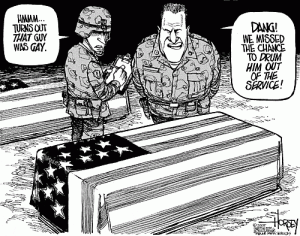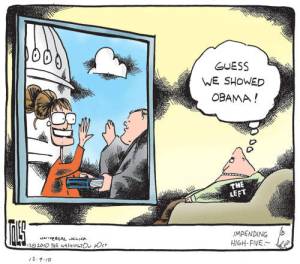Today, December 18th, 2010, the conservative argument of working hard, individual achievement, and merit took a back seat to political tactics and false ideals. The long held tradition of judging a man not on the faults of his parents, but on the merit of his individual achievement has failed to be recognized by the current Repbulican minority via the DREAM Act. The Act was pushed by liberal leaders in Congress to allow young immigrants brought to the United States illegally by their parents a chance at citizenship through a college education or service to the People of the United States through the armed forces. As the vote finally came down on a Saturday session of the U.S. Senate, Republicans filibustered and Democratic Leadership failed to garner the 60 votes needed for cloture. This failure provides a context by which to begin a new dialogue as activists and campaigners begin thinking about 2012. The DREAM Act represents the first step in a commom sense approach to immigration reform. This commom sense has been stifled by Republican Leadership and the conservative mantra of self-determination has proven to be mindless rhetoric. Whether it be xenophobia, fear of liberal-leaning Latino voters, or simply the misplaced pride of a minority party, congressional Republicans have failed to live up to the American concepts of what freedom is. Empty rhetoric is not governance and it is hopeful that this display is not a preamble to the Republican Majority that will soon take the reigns in the U.S. House.
With the DREAM Act sufficiently squashed and the repeal of Don’t Ask, Don’t Tell at the forefront of a lame duck Congress, the U.S. Senate voted 65-31 to repeal a foolish policy and proving that the U.S. Congress is not entirely devoid of reason. With that said, the Nays on repealing Don’t Ask, Don’t Tell came predominantly from Republican Senators bent on pushing a false moral premise that is at odds with the very notions of freedom laid out by our founders over 200 years ago. Unlike the DREAM Act, conservatives see gays in the military and in society at large through the moral kaleidoscope provided mostly by the Christian Right. Though the rhetoric contains arguments concerning the well-being of those serving in the military via unit cohesion and war-time disruption, the truth is that many conservatives have a moral problem with openly gay members of the military as well as within the American community. As the Christian Right and their allies may see gay and lesbian citizens as representing some sort of moral corruption, the true moral corruption exists when freedom is denied. Consequently, this form of rhetoric mirrors those against blacks as the military moved to racially integrate the armed services over half a century ago. Those arguments failed then as they have today.
Contrary to the belief that the DREAM Act was a form of amnesty, the Act truly lays out a path to citizenship with some very difficult requirements. Under the Act, applicants would be required to wait 10 years, have a high school diploma or GED, pay back taxes and application fees, and either be attending college or serving in the military. Beyond that, applicants must be free of a criminal record; a requirement that many members of Congress would fail to fulfill. This ‘path’ is no easy task and represents a foundation for citizenship that many Americans have only through birthright. Without common sense immigration reform that is free of xenophobia and political gamesmanship, this nation will fail to live up to the ideals of freedom or what Abraham Lincoln called “the last, best hope of Earth.”




